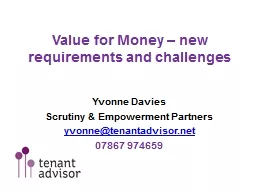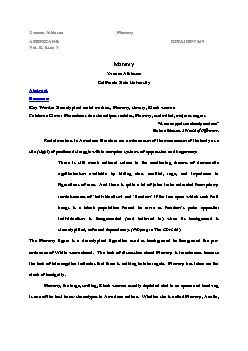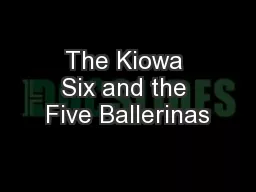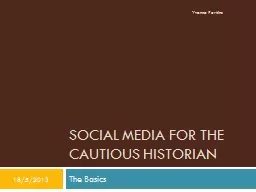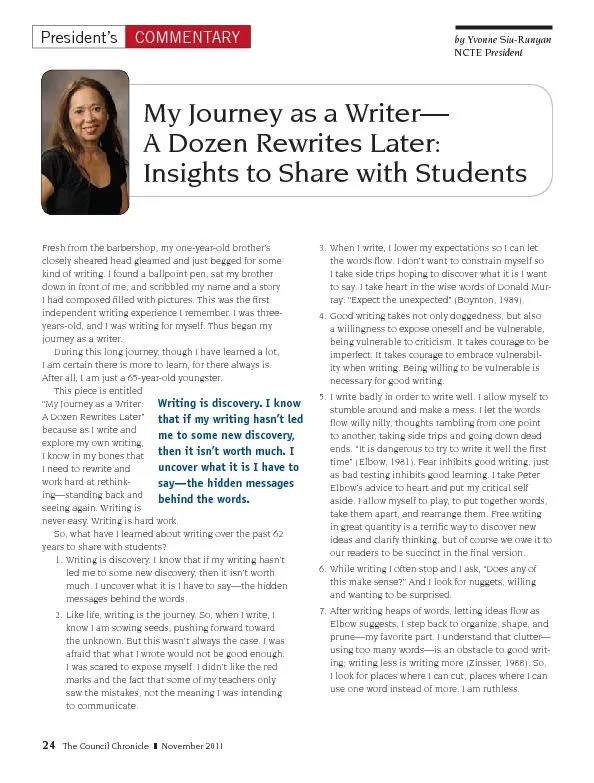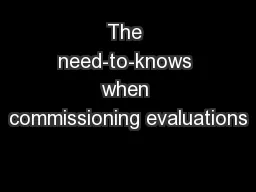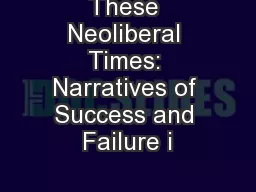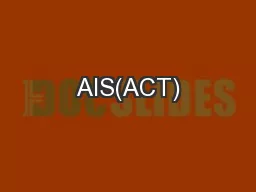PPT-Yvonne Davies
Author : tatyana-admore | Published Date : 2017-09-11
Scrutiny amp Empowerment Partners yvonnetenantadvisornet 07867 974659 Value for Money new requirements and challenges Tenant Involvement amp Empowerment Standard
Presentation Embed Code
Download Presentation
Download Presentation The PPT/PDF document "Yvonne Davies" is the property of its rightful owner. Permission is granted to download and print the materials on this website for personal, non-commercial use only, and to display it on your personal computer provided you do not modify the materials and that you retain all copyright notices contained in the materials. By downloading content from our website, you accept the terms of this agreement.
Yvonne Davies: Transcript
Download Rules Of Document
"Yvonne Davies"The content belongs to its owner. You may download and print it for personal use, without modification, and keep all copyright notices. By downloading, you agree to these terms.
Related Documents

